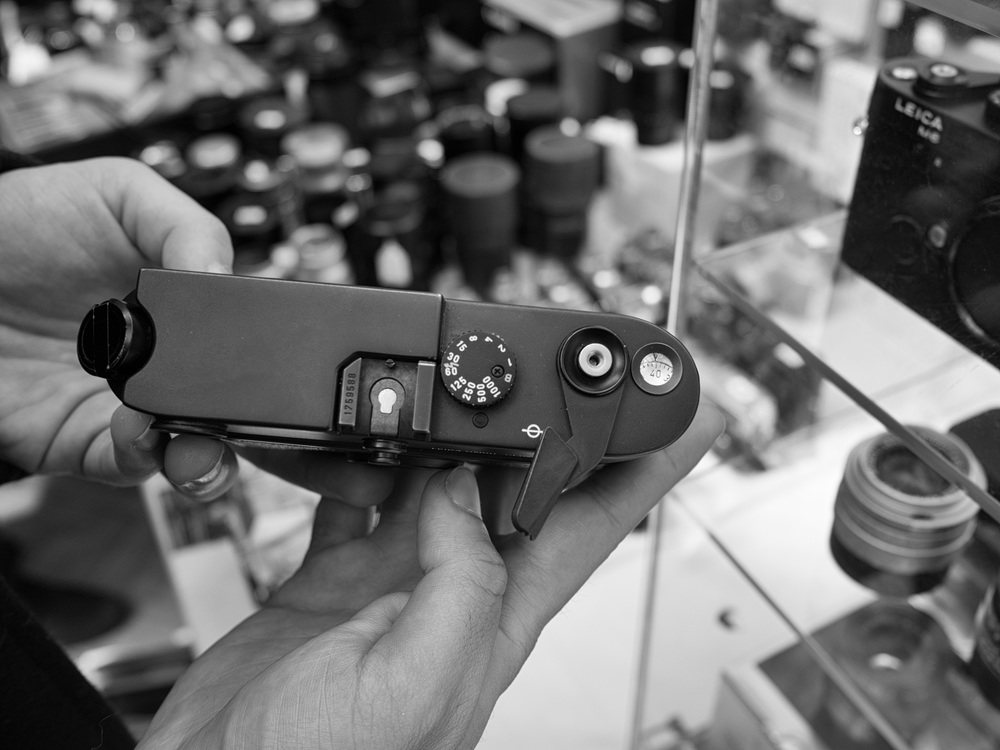
I’ve lost count of the number of times I’ve been asked why the M240 and its variations cannot be made to the same depth as the M3 or the M6—33mm instead of 37mm. The rear screen and associated gubbins was often cited as the reason for this discrepancy in the bulkier digital. So when the M-D was announced there were renewed gasps of disbelief that the dimensions were exactly the same as the M240. Surely, many reasoned, without the screen and all those buttons it should have been possible to shave 4mm off the depth of the camera.
Of course it isn’t as simple as this. Take a look at this M6 picture and the film-plane symbol. That shows where the film (that is, the sensor) sits in relation to the back of the camera. There’s not all that much space. But the distance from the film plane to the lens is absolutely necessary and must be reproduced on a digital camera with the sensor taking the place of the film.
Now, as can be readily acknowledged, a sensor and its electronics is much thicker than a strip of celluloid. It easily accounts for the 4mm difference, even when you take away the screen and all its circuitry. This isn’t to say that a slight reduction in depth couldn’t be achieved; after all, sensors are probably getting thinner as technology progresses. One day a sensor could indeed by as thin as a piece of celluloid. Perhaps, if Leica were starting from scratch, some depth saving could be made.
For the moment, however, the M-D is a niche product and I am sure that retooling to allow a thinner body would be uneconomical. I hope, though, that advances in sensor technology and the success of the M-D will combine to make some reappraisal possible.

If you want to see really big, look at the angular massive leather case that was made for the M5 in the 1970s. With body and lens in that case, you had a humdinger of a package to lug around.
Yes, agreed. The M5 is the one Leica film camera I have not tried. William Fagan did write about his experiences recently. Perhaps one of these days I will pick one up and make it the subject of an article.
Why not just push the lens mount out further and make the body thinner?
Pierre, I replied to this while in France but for some reason the items wasn’t posted. So here goes again.
That’s a valid point and, of course, it is what Sony did with the A7 and RX1: That gold-coloured lens collar is there precisely for this reason. However, what is possible with an electronic lens is not likely to be possible with M lenses. The rangefinder mechanism depends on direct contact between the lens and the mount. I suspect it wouldn’t be possible to bring the mechanism forward to meet with the lens in the event of a spacing collar. I think the solution is more likely to come from miniaturisation of the sensor itself, pushing it further towards the back of the camera. As I mentioned in the article, we are talking 4mm only, so something should be possible.
Thank you for the clear and logical explanation: just think of the endless forum-column-inches and future guesses (other than Macfilos that is) have been devoted to this uninteresting topic! By the way, if you want to see what a really overweight 240 looks like just slip it into Leica’s long-front ever ready case.
Hmm….can’t imagine this. I need a picture.